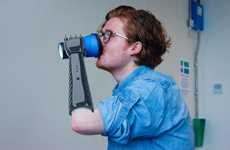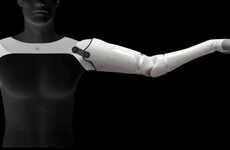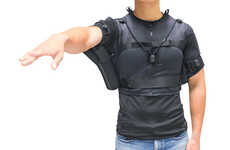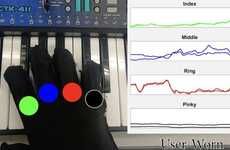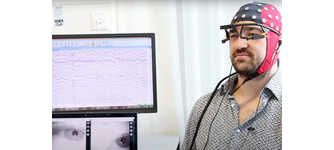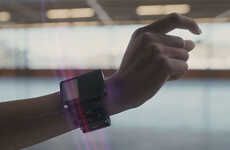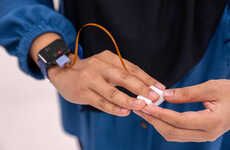
This New Prosthetic Uses Haptic Feedback to Provide Muscle Sense
Mary Van Puymbroeck — June 1, 2017 — Tech
References: news.rice.edu & engadget
Researchers from Rice University and the University of Pisa have combined their work to produce the first step towards developing a prosthetic with muscle sensation.
This is a highly significant development as one of the largest hurdles to overcome in prosthetics was the lack of muscle sensation. Scientists were able to create highly functional prosthetic limbs but the lack of feedback can make operating the prosthetic a difficult and some impossible task.
This prosthetic is unique in that it uses non-invasive haptic feedback to transmit sensation to the user. Called the 'Rice Haptic Rocker,' the device sits on the users upper arm and a soft rubber patch moves with the prosthetic. "Based on this tactile feedback, the wearer is able to infer the relative position of the prosthetic without having to actively look at it".
This is a highly significant development as one of the largest hurdles to overcome in prosthetics was the lack of muscle sensation. Scientists were able to create highly functional prosthetic limbs but the lack of feedback can make operating the prosthetic a difficult and some impossible task.
This prosthetic is unique in that it uses non-invasive haptic feedback to transmit sensation to the user. Called the 'Rice Haptic Rocker,' the device sits on the users upper arm and a soft rubber patch moves with the prosthetic. "Based on this tactile feedback, the wearer is able to infer the relative position of the prosthetic without having to actively look at it".
Trend Themes
1. Movement-sensing Prosthetics - Developing prosthetics with muscle sensation could revolutionize the field of prosthetics, providing a more intuitive and natural user experience.
2. Non-invasive Haptic Feedback - The use of non-invasive haptic feedback in prosthetics opens up possibilities for more effective and comfortable sensory integration in future prosthetic designs.
3. Tactile Feedback Technology - Advancements in tactile feedback technology for prosthetics can enhance user proprioception and control, improving overall functionality and usability.
Industry Implications
1. Medical Devices - The medical devices industry can explore disruptive innovation opportunities by incorporating movement-sensing prosthetics with haptic feedback into their product development.
2. Healthcare Technology - Healthcare technology companies can capitalize on non-invasive haptic feedback to improve the functionality and user experience of prosthetic devices, enhancing the lives of amputees.
3. Biomedical Engineering - Biomedical engineering industry can leverage advancements in tactile feedback technology to create more advanced and user-friendly prosthetics, driving innovation in the field of rehabilitation.
1.4
Score
Popularity
Activity
Freshness


